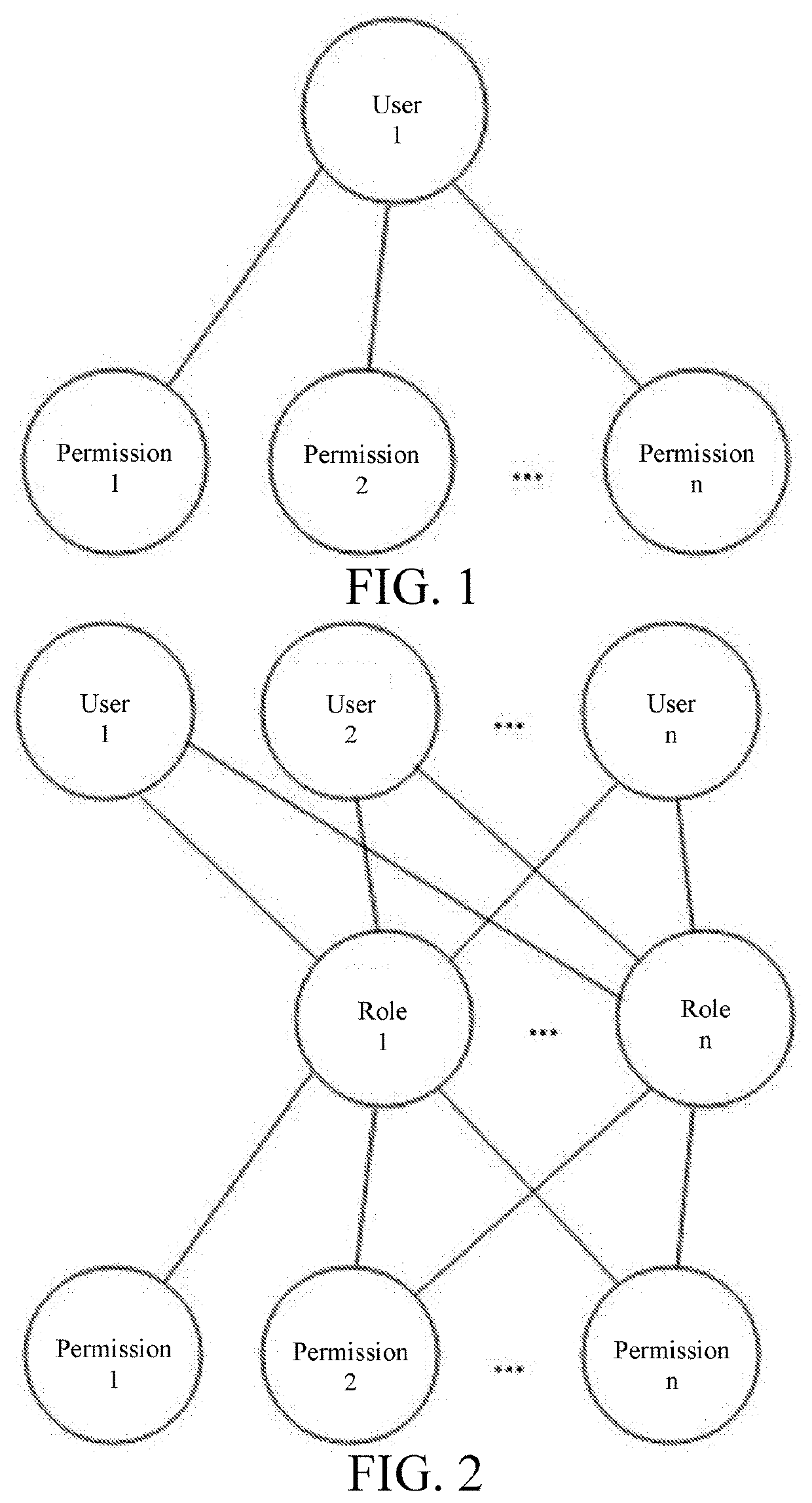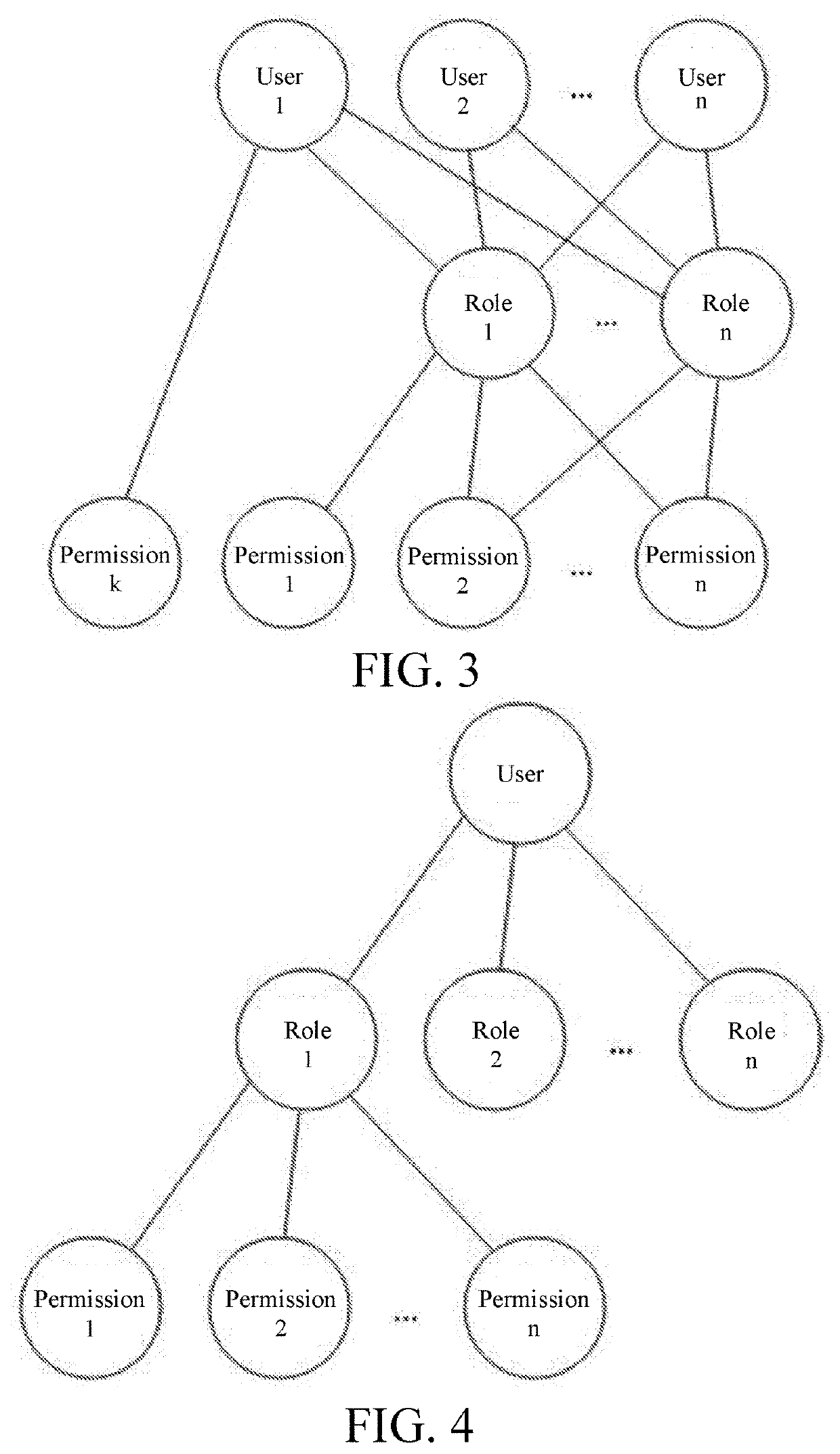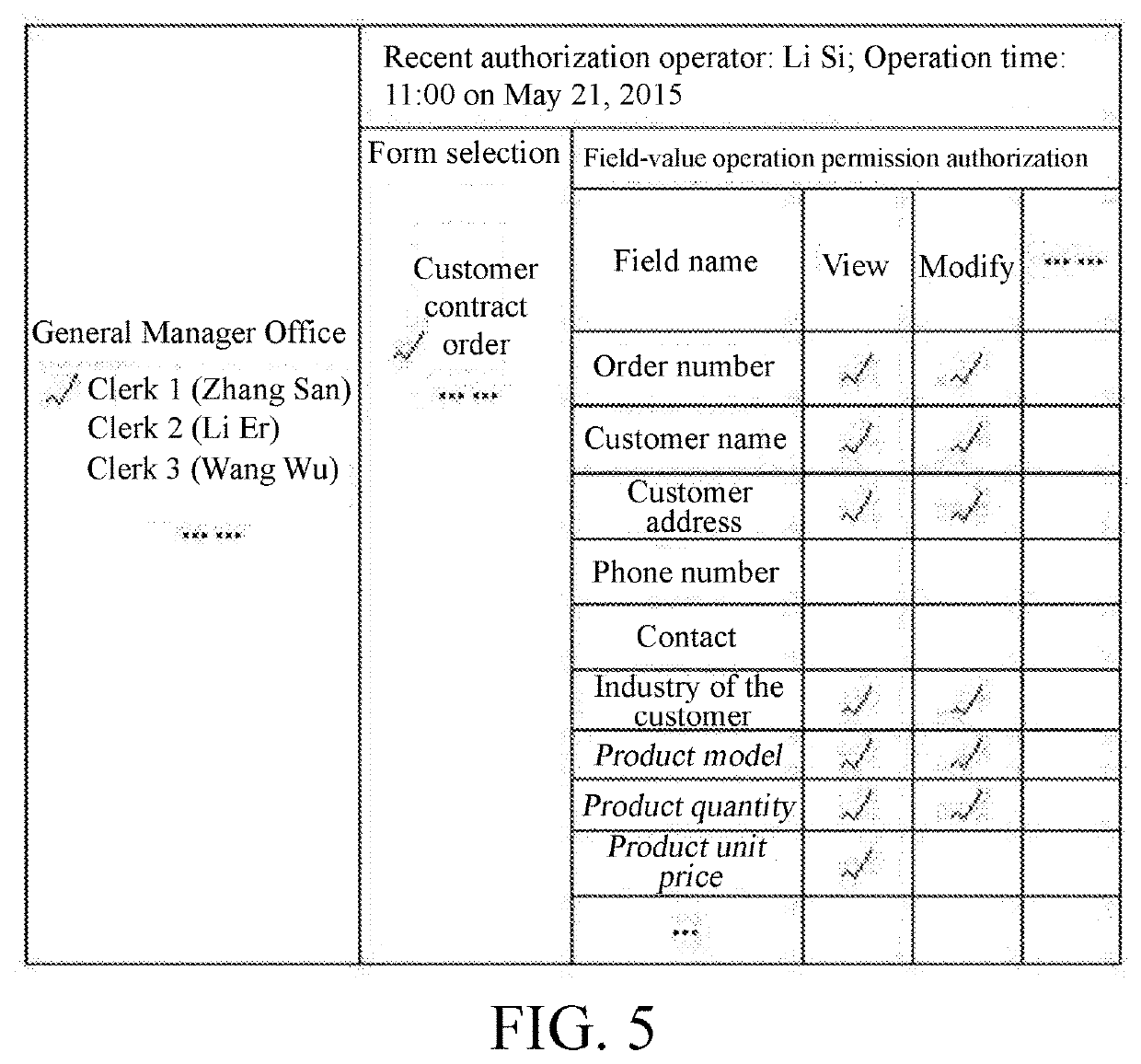Method for authorizing operation permissions of form-field values
a technology of form field values and operation permissions, applied in the field of formauthorized methods in management software, can solve the problems of low authorization efficiency, inconvenient usage, and inability to hold accountability or provide a current authorization operator, and achieve the effect of improving the fineness of system management, rapid permission setting, and improving authorization efficiency
- Summary
- Abstract
- Description
- Claims
- Application Information
AI Technical Summary
Benefits of technology
Problems solved by technology
Method used
Image
Examples
embodiment 1
[0047]In this Embodiment, the Fields that Need Operation permission control are set first, and then the corresponding operation permissions are set.
[0048]A method for authorizing operation permissions of form-field values includes a step of authorizing operation permissions of form-field values and a step of selecting a grantee, wherein there is no sequence relation between the step of authorizing operation permissions of form-field values and the step of selecting a grantee; the step of authorizing operation permissions of form-field values includes the following steps: S1: selecting a form to be authorized, and displaying fields in the form that need operation permission control; and S2: authorizing the operation permissions to each value of the fields respectively (the fields that need operation permission control displayed in S1 are authorized, and it is considered by default that a field value of a field which is not displayed in S1 and does not need permission control has a vi...
embodiment 2
[0067]In this embodiment, one or more grantees may be selected, and only one form to be authorized can be selected. There is one and only grantee selected, and when a form to be authorized is selected, an operator and operation time that field values of the form are authorized to the grantee recently are displayed.
[0068]As shown in FIG. 5, when one grantee is selected and a form to be authorized is selected, an operator and operation time that field-value operation permissions of the form are authorized recently are displayed. A current state of the grantee's operation permissions for field values in the form is also displayed, and the current state is modified and saved to obtain new field-value operation permissions.
[0069]As shown in FIG. 6, when multiple grantees are selected and a form to be authorized is selected, the operator and the operation time that field-value operation permissions of the form are authorized recently are displayed as empty, and the state of the selected g...
embodiment 3
[0074]In this embodiment, display modes of a field value that does not have the viewing permission include: (1) displaying a field corresponding to the field value, but hiding the field value by using a hiding symbol, where as shown in FIG. 8, fields “phone number” and “contact” are displayed but the content of the fields are hidden with the symbol *; (2) displaying neither the field value nor the field corresponding to the field value.
[0075]Field values with and without the modification permission also need to be differentiated during display. For example, a field value without the modification permission is displayed as gray shading, as shown in FIG. 8.
[0076]Specifically, one form includes basic fields and detail fields. The detail fields are column names on a detail list in the form. For example, in an order form, basic fields include order number, customer name, customer address, phone number, contact, industry of the client, and so on; detail fields include product model, produ...
PUM
 Login to View More
Login to View More Abstract
Description
Claims
Application Information
 Login to View More
Login to View More - R&D
- Intellectual Property
- Life Sciences
- Materials
- Tech Scout
- Unparalleled Data Quality
- Higher Quality Content
- 60% Fewer Hallucinations
Browse by: Latest US Patents, China's latest patents, Technical Efficacy Thesaurus, Application Domain, Technology Topic, Popular Technical Reports.
© 2025 PatSnap. All rights reserved.Legal|Privacy policy|Modern Slavery Act Transparency Statement|Sitemap|About US| Contact US: help@patsnap.com



